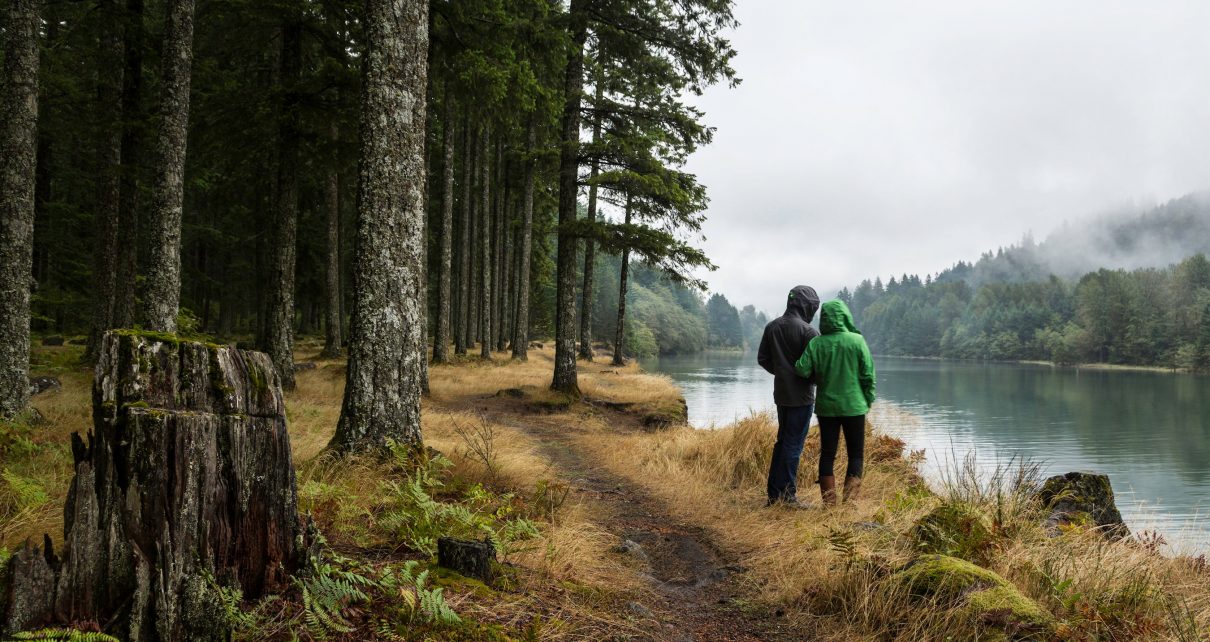As the COVID-19 pandemic rages around the world, shattering our familiar realms of work, education and play, many of us in lockdown face a binary choice: We can hunker down at home, or—when we can’t stand it anymore—take a walk outside. After the crisis began, I witnessed a tenfold surge in the number of people strolling through a waterfront park near my home. Until my state shut down its beaches and parks a few days ago—the last of our nonessential public spaces to close—it offered a coveted refuge where people could emerge and move safely about.
In this way, the novel coronavirus has forced us to reevaluate the value of natural outdoor settings, a rare pause to a decades-old trend. All over the world, the amount of time that people spend outdoors has been declining. From studies of park visitations, fishing license sales, campground attendance and other historical records, we find that humanity’s interest in outdoor recreation peaked in the 1980s and early 1990s, and has been steadily dropping ever since. Put simply, a massive retreat of Homo sapiens from the natural world is underway, even as our growing global demand for land and natural resources is straining the Earth’s climate and environment.
The underlying reasons for this trend are debated, and likely still evolving. Numerous studies point to our growing preoccupation with indoor entertainment, beginning first with television and videos, then progressing to internet browsing, social media and online gaming. These technologies of course offer countless benefits for entertainment, education and social interaction, but they come at a cost to our personal well-being.
More than a decade ago, the bestselling book Last Child in the Woods, by Richard Louv chronicled a growing body of scientific evidence that spending time outdoors is critically important to the developmental health of children. Citing many scientific studies, Louv traced declining outdoor activities to a dizzying array of psychiatric disorders, obesity and other maladies, and coined the term “nature deficit disorder” to collectively describe them. His follow-up book, The Nature Principle, found that nature-deficit disorder also affects adults.
A dip into this science is quite interesting. One University of Michigan study that sent adult study subjects for a 50-minute walk through an Ann Arbor park found that it measurably restored their cognitive skills, whereas a walk through the city’s busy downtown degraded it. These improvements in brain function were observed regardless of a person’s mood, weather conditions or other external factors. Importantly, peacefulness alone (such as sitting in a quiet room) could not reproduce the observed cognition benefit. There is something about the kind of moderately interesting stimuli found in nature—even those in a simple city park—that is restorative for our brains.
Small wonder that during times of acute stress like we’re in now, a walk outdoors feels more important than ever. Access to natural settings is especially critical for cities, where green space is at a premium, and where more than half of all people live. By 2050, that number will rise to nearly 70 percent. Fortunately, a remarkable renaissance is underway in most urban cores that will help with this problem, both during (where allowed) and long after this pandemic.
Over 90 percent of the world’s largest cities—and most smaller ones too—were built along rivers. Since the industrial revolution, these urban waterways have typically been lined with heavy industry, making them inaccessible and heavily polluted. In recent decades, the flight of manufacturing and shipbuilding, together with pollution-control laws, caused these large waterfront properties to shutter and decay. Owners and city planners struggled for years to repurpose these sites, with mixed results. But now, urban planners and designers are eyeing them in a new light. The derelict riverfronts have become ripe targets for redevelopment.
Industrial properties are typically huge compared to other available land parcels. Their large size attracts ambitious redevelopment projects incorporating mixed-used residential and commercial space, affordable housing programs, environmentally sustainable materials, and—very importantly—opportunities for lots of public outdoor green space.
Modern urban planning is all about public commons and green space, and reimagined riverfront properties offer rare opportunities to create them. This is a consequence of long-standing legal norms protecting public access to rivers (an idea dating to Roman times), and of physical threats posed by rivers themselves. By definition, floodplains are naturally prone to flooding and erosion, making them risky locations for buildings. In coastal areas, rising sea level adds another long-term existential threat to waterfront structures. As a result, riverbanks have become uniquely appealing for repurposing into elongated, floodable urban parks. Such projects are now proliferating in cities all over the world.
In New York City alone, waterfront redevelopment plans for dozens of former industrial sites are planned or underway, virtually all of which create new public parklands in a crowded city that desperately needs them. Other major projects are in progress along the Thames River in London, the Huangpu in Shanghai, the Elbe in Hamburg, the Nile in Cairo, the long-maligned Los Angeles River in Southern California, and many others.
Done right, reimagined urban riverfronts offer a rare opportunity to create vibrant, appealing neighborhoods with public access to calm outdoor settings and a curated form of nature. Already, millions of city people are enjoying new waterfront parks, where they can stroll, exercise or simply pass a few calm minutes outside. One doesn’t have to hike the Appalachian Trail to reap the cognitive and health benefits of being outside. Waterfront spaces will help many of us endure the current crisis and make access to the outdoors a daily possibility for millions—yes, billions—of people in our rapidly urbanizing world.
For those of us lucky enough to be safely holed up in our homes, this pandemic offers a chance for reflection. I view with new appreciation the public park near my house, and how much harder this lockdown became after it was shut down. Spending time outdoors, even in urban settings, even six feet away from the next closest person, offers a refuge of normality during these extraordinary times.
If you can get outside, value it. If you cannot, then think about which nearby natural setting you might visit soon, when the restrictions are lifted. Chances are high that a river runs through it.


